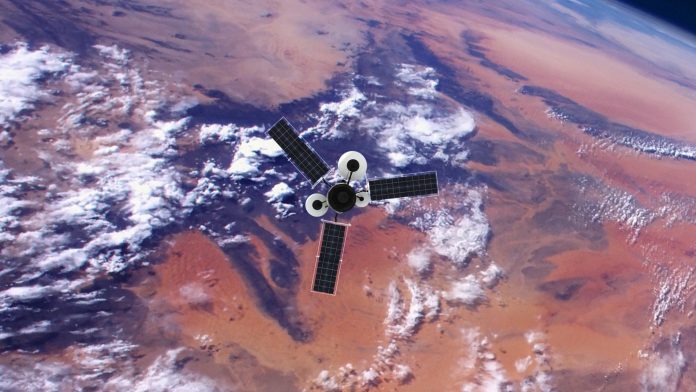A team of researchers at Graz University of Technology (TU Graz) have been able to obtain reliable space weather forecasts.
Solar storms and related events have the potential to instigate damage to both electronic systems on Earth and on satellites. The Sun expels massive clouds of charged plasma particles that greatly disrupt the Earth’s magnetic field.
“The ejected plasma consists mainly of electrons and protons and increases the neutral density in the Earth’s atmosphere,” explained TU Graz scientist Sandro Krauss of the Institute of Geodesy.
Communication signals from satellites may be impeded and lead to inaccurate position determination. As well as this, the charged plasma particles can potentially heat up the upper layers of the Earth’s atmosphere so that it expands, the atmospheric drag grows, and satellites drop in speed and altitude. In a worst-case scenario, this could result in the loss of research satellites.
Now, Krauss and his research team are working on two research projects to forecast these space weather events in near-real time, so that satellite operators and space agencies can react to the related dangers as fast as possible.
Extending lead times
Researchers are currently practising a novel combined method to forecast the impacts of solar events on satellites. The foundation of this is established by atmospheric density approximations obtained from orbital data and accelerometer measurements from different satellites.
“Depending on the atmospheric density, satellites can be accelerated or slowed down. From these accelerations due to drag, we can infer density,” commented Krauss.
Since the satellites are at varying altitudes – between 300 and 800 kilometres – the team has been able to assemble a tomography of the Earth’s upper atmosphere and then approximate the effect of the solar event on the atmosphere as a function of satellite altitude.
A combination of real-time measurements of the solar wind plasma and the Earth’s magnetic field by satellites situated 1.5 million kilometres from Earth, should lead to forecasts with a lead time of six to eight hours. “The satellites start taking measurements as soon as the solar wind hits them. The data is then transmitted directly to the ground stations,” said Krauss.
In order to expand the lead time, the group connects the gathered data to geomagnetic and physical values from hundreds of solar events dating back to the year 2000. The researchers’ findings will be made available using a real-time demonstrator (SODA) and is to be integrated into the European Space Agency’s (ESA) ‘Safety and Security’ programme.
Improving space weather forecast accuracy
In the ESPRIT project, the team of TU Graz researchers, alongside the Space Research Institute of the Austrian Academy of Sciences, are exploring the physical states of the solar wind plasma, the interplanetary magnetic field, and the solar radiation during different solar events. To aid in this task, the scientists are getting assistance from colleagues at the University of Graz and the University of Colorado Boulder. “Especially in terms of accuracy and reliability, solar event prediction is still in its infancy,” commented Krauss, highlighting the necessity of gathering more information about space weather. As well as this, the chemical composition of the Earth’s upper atmosphere is being analysed in greater detail. It is currently understood that specific compounds of nitric oxide, carbon dioxide and helium found there minimise the heating of the Earth’s atmosphere because of solar storms. However, Krauss added that: “We still know too little about the origin of these chemical states. This complicates predictive accuracy.”
Krauss concluded by predicting that the findings of both projects will result in improved and more precise predictive models within the next few years. As a result of fast advancements in the field, it is also essential to decrease the risk of errors and failures for everyday devices and technical infrastructure.









